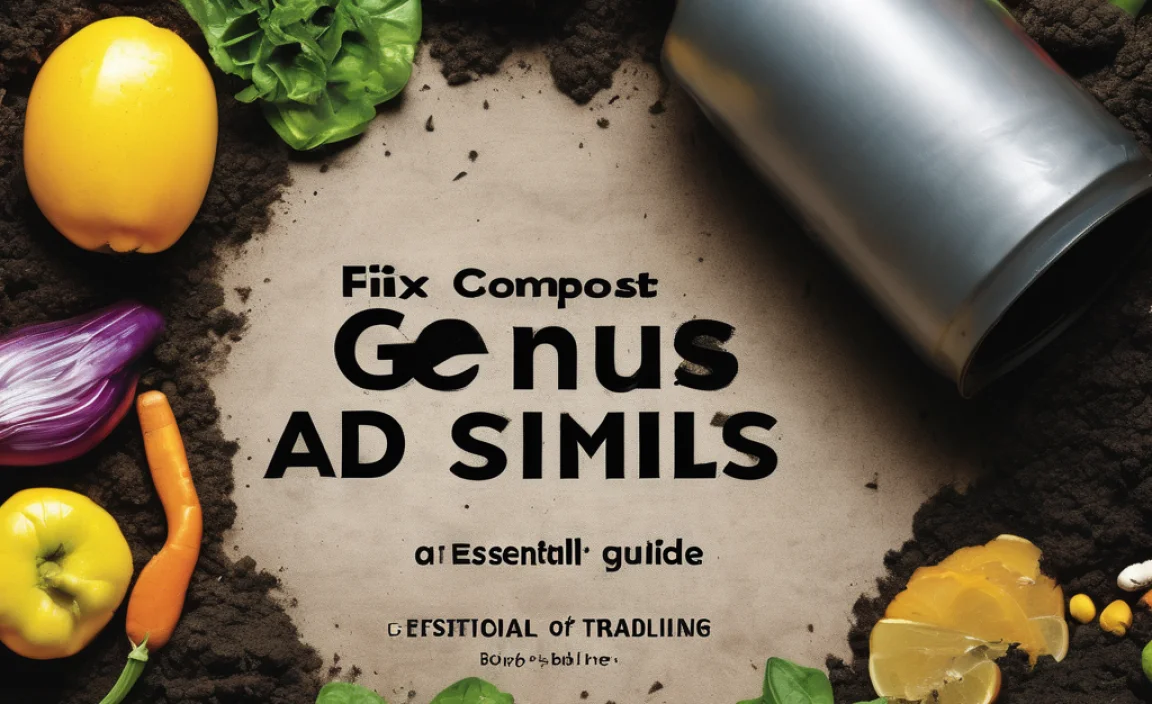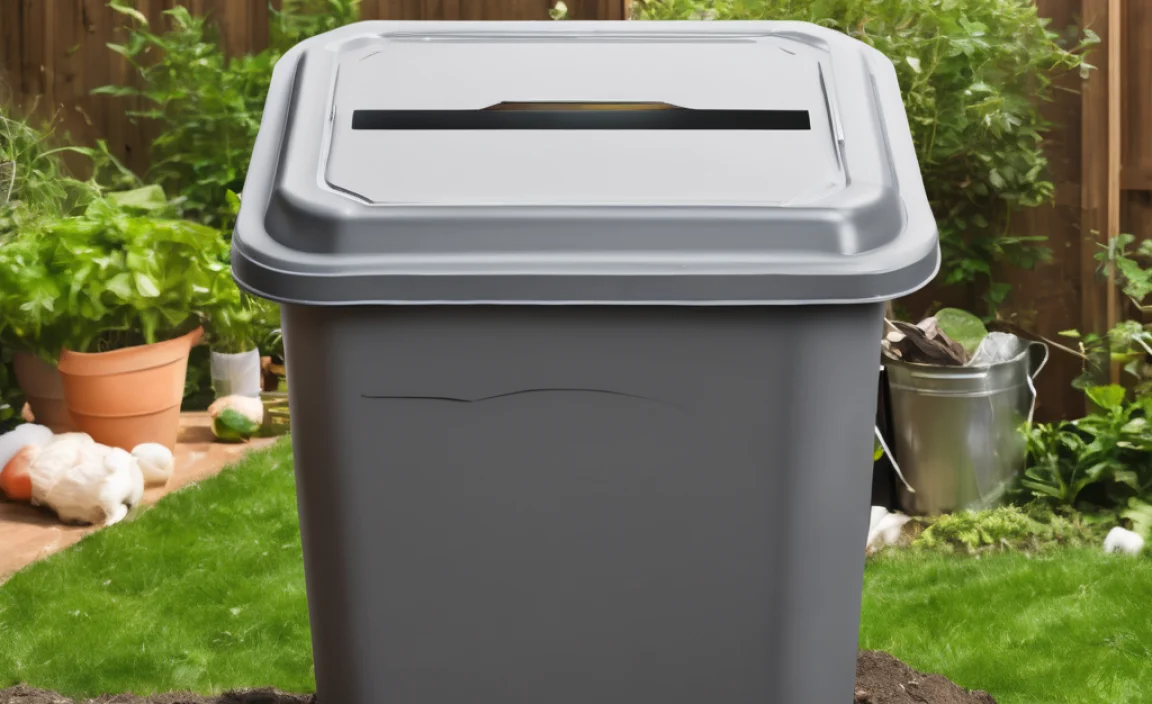Got a loaf of bread going stale? Don’t toss it in the trash! It’s easy to turn that leftover bread into rich compost for your garden. Many people think bread is a no-go for composting, but with a few simple tips, you can successfully compost bread without any stinky problems.
This guide will show you exactly how to do it, so you can feed your compost bin and reduce food waste. Let’s get started!
Keywords: bread composting, compost bread, composting bread scraps, how to compost bread, food waste composting, garden compost, sustainable living, waste reduction.
Why Compost Bread?
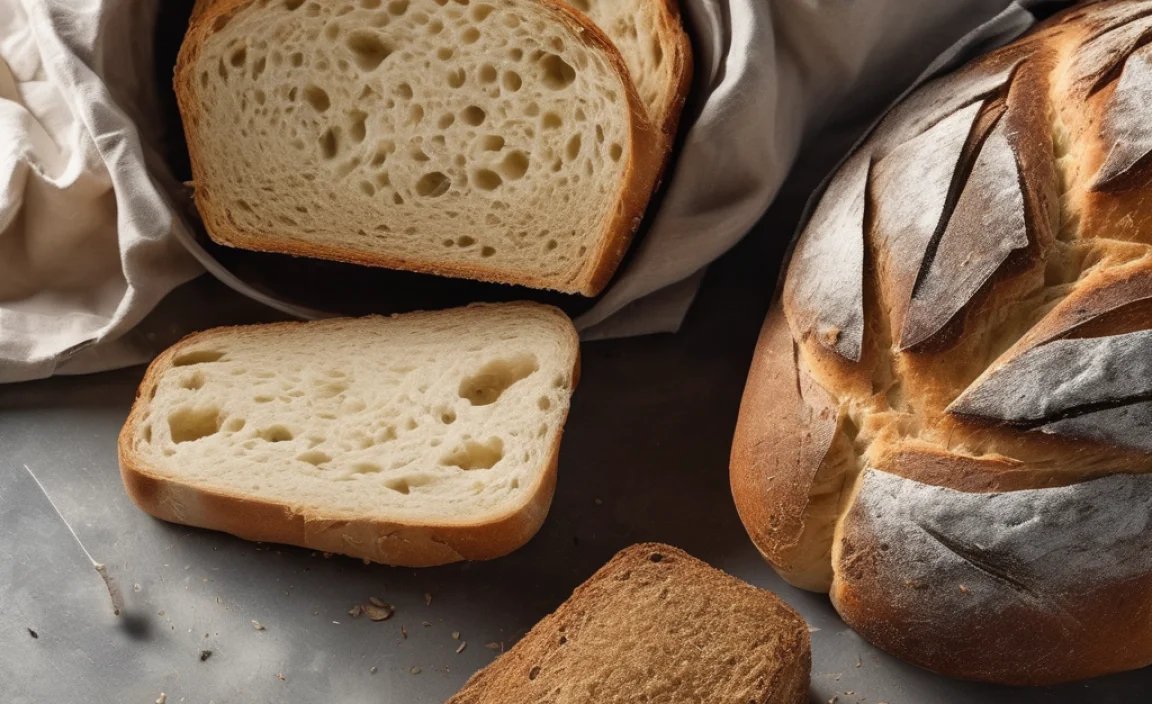
Composting is a fantastic way to reduce what you send to the landfill. Food scraps make up a big part of household waste, and bread is a common item that often ends up there. When bread decomposes in a landfill, it produces methane, a potent greenhouse gas. However, when composted properly, it breaks down aerobically (with air) and becomes a valuable soil amendment.
Compost helps your garden soil:
- Retain moisture
- Improve drainage
- Provide essential nutrients for plants
- Encourage beneficial soil microbes and earthworms
So, that old crust or half-eaten sandwich can become superfood for your garden!
Is Bread Okay for Your Compost Bin?
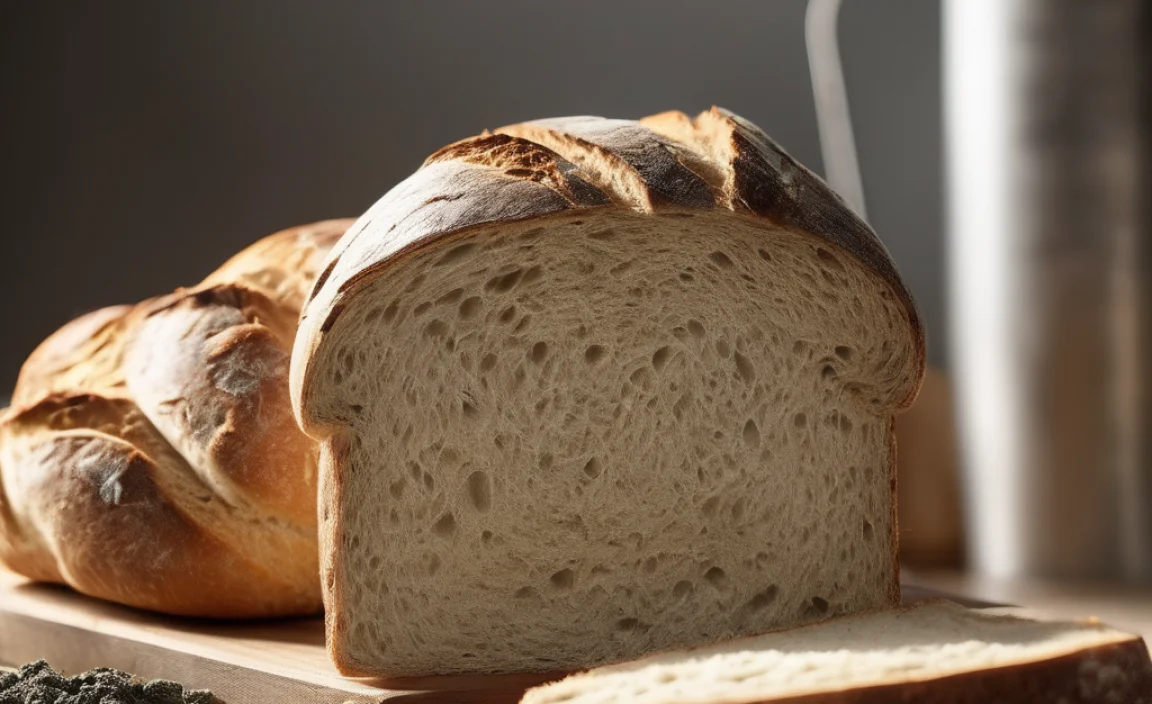
Yes, absolutely! Bread is a “green” material in composting terms, meaning it’s rich in nitrogen. This is great because compost piles need a balance of “green” (nitrogen-rich) and “brown” (carbon-rich) materials to break down efficiently. Too many greens can make a pile wet and smelly, while too many browns can slow down decomposition.
While bread itself is suitable, there are a few things to keep in mind to avoid attracting unwanted pests or creating a soggy mess. We’ll cover those in detail below.
What Kind of Bread Can You Compost?
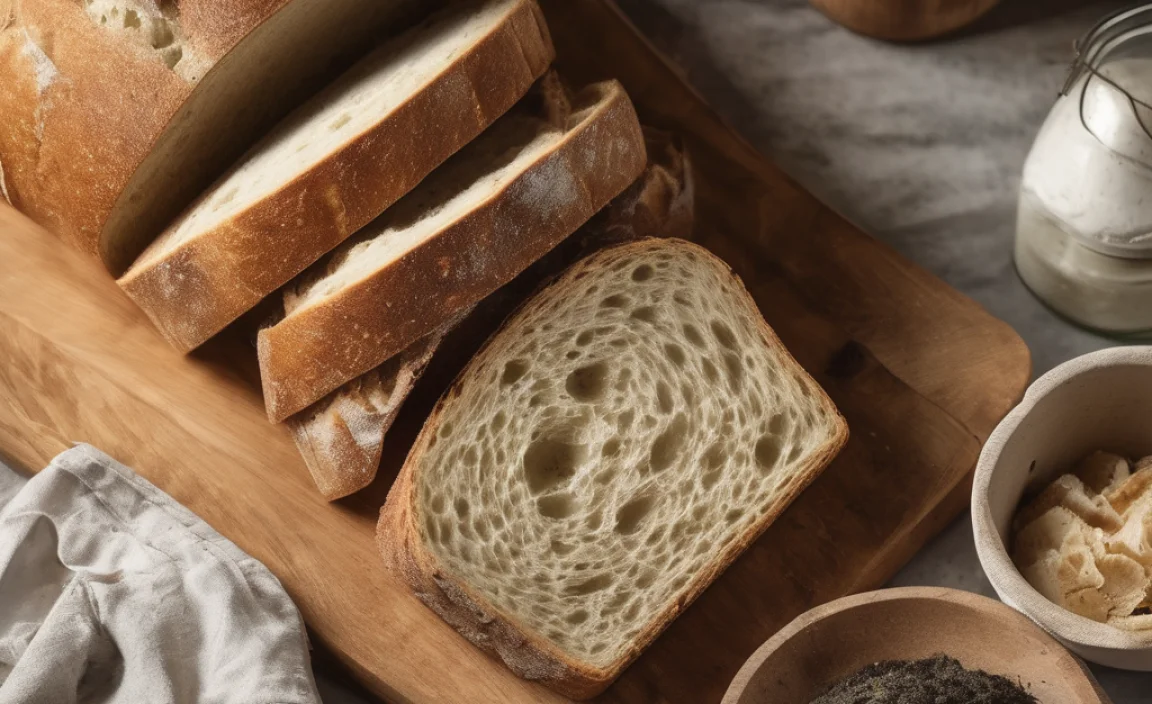
Most types of bread are fair game for your compost bin:
- White bread
- Whole wheat bread
- Sourdough
- Rye bread
- Bagels
- Rolls
- Croissants
- Muffins
- Cakes
- Cookies
- Pasta
- Rice
Basically, if it’s made from grain and a baked good, it can generally be composted. This includes things like leftover pizza crusts, stale crackers, and even some pastries. The key is moderation and balance.
What to Avoid When Composting Bread
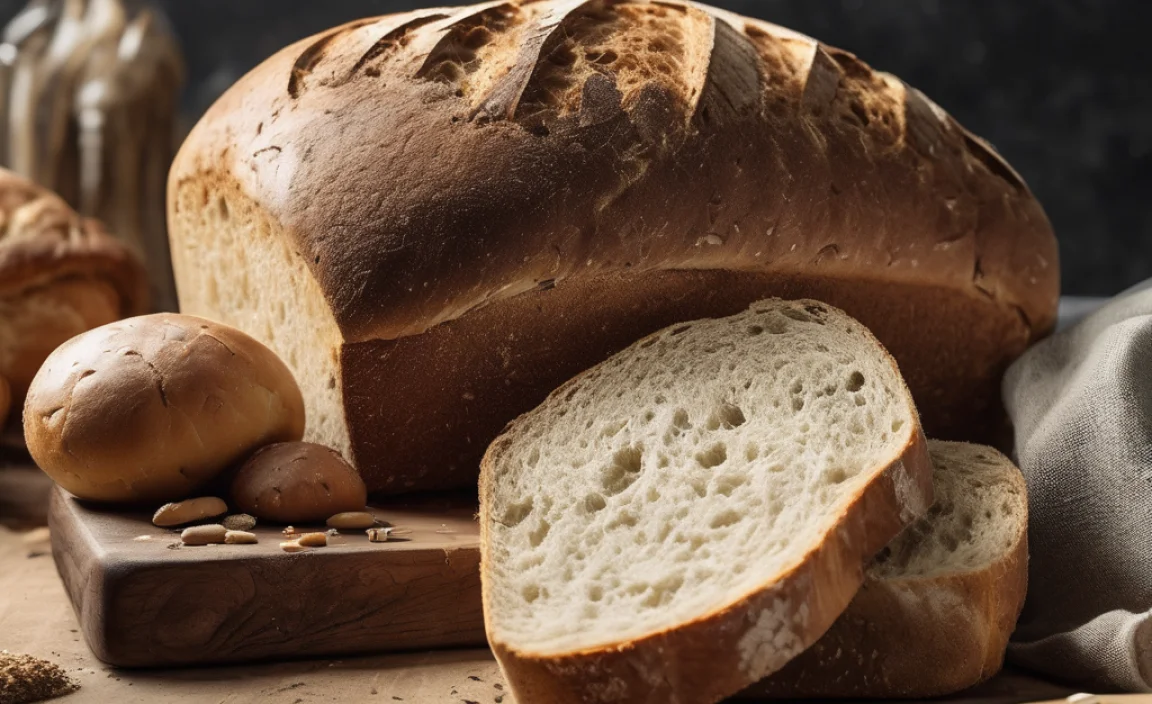
While bread is generally good, there are a few scenarios where you might want to hold back:
- Moldy Bread with Black or Pink Mold: While some molds are beneficial in composting, aggressive, fuzzy molds (especially black or pink ones) on bread can sometimes indicate undesirable bacteria or fungi that you don’t want to introduce into your compost. It’s generally safer to discard heavily moldy bread in the trash if you’re unsure.
- Bread with Excessive Butter, Grease, or Meat Products: A little butter on a roll is usually fine. However, large amounts of oily or fatty substances, or bread heavily coated in meat juices, can slow down decomposition, attract pests, and create odors.
- Excessive Quantities of Bread: A slice or two here and there is perfect. A whole loaf every day can overwhelm your compost bin, making it too dense and wet. Aim to add bread in moderation, as part of a balanced diet for your compost.
How to Compost Bread: A Step-by-Step Guide
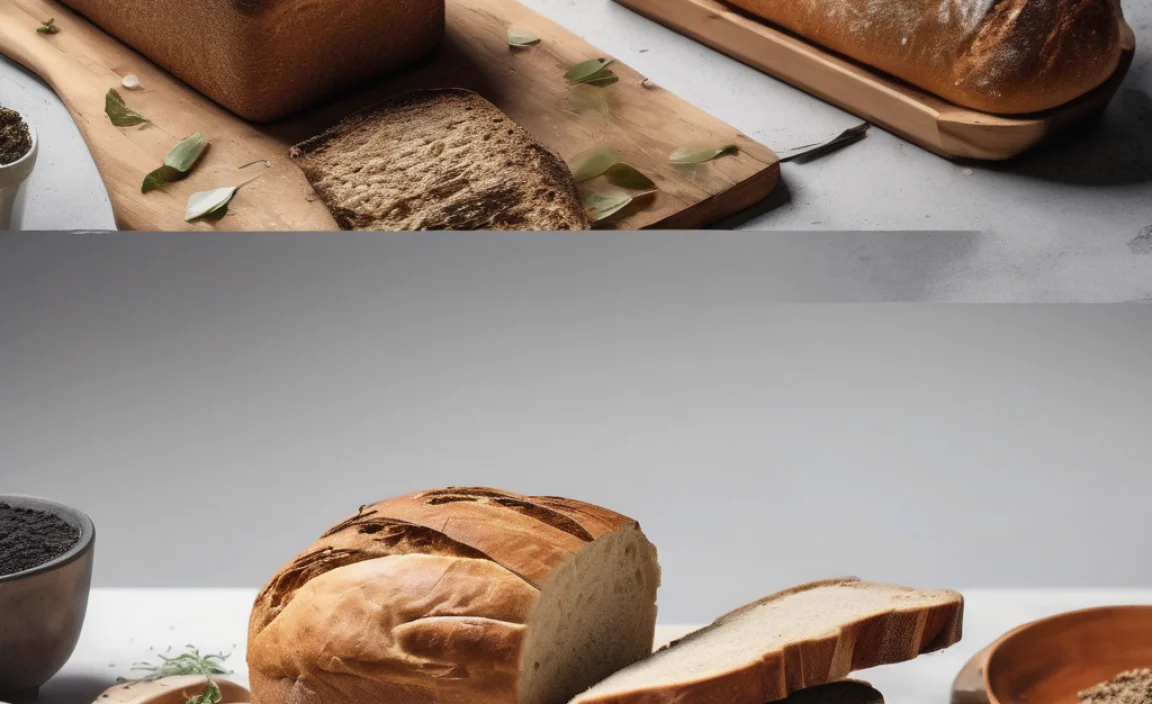
Composting bread is straightforward. The main goal is to break it down further and balance it with other compostable materials. Here’s how:
Step 1: Prepare the Bread
Larger pieces of bread take longer to break down. To speed things up, tear or cut the bread into smaller pieces. Think bite-sized chunks. This increases the surface area, allowing microbes to get to work faster.
If you have a whole loaf, consider breaking it into quarters or smaller. Stale, dry bread is actually easier to handle and decomposes well. Fresh or slightly moist bread is also fine, but be mindful of adding too much moisture to your bin.
Step 2: Combine with Browns
This is arguably the most crucial step for successful bread composting. Bread is a nitrogen-rich “green” material. To prevent your compost from becoming a wet, smelly mess and to deter pests, you must balance it with carbon-rich “brown” materials. Browns provide the structure and carbon source for decomposers.
Aim for a ratio of about 2 to 3 parts browns for every 1 part greens. For every handful of bread you add, add at least two or three handfuls of brown material.
Good brown materials include:
- Dry leaves
- Shredded cardboard (non-glossy)
- Shredded newspaper (black and white ink only)
- Straw or hay
- Wood chips or sawdust (in moderation)
- Paper bags
- Toilet paper or paper towel tubes
Step 3: Bury It Deep
To avoid attracting pests like rodents or flies, always bury your bread scraps deep within the compost pile. Dig a hole in the center of your compost bin or pile, place the bread scraps inside, and then cover them thoroughly with at least 6-8 inches of other compost materials (preferably browns).
This “burying” action is key. It hides the food source and ensures the bread is surrounded by the ideal conditions for decomposition, rather than becoming an easy target for unwanted visitors.
Step 4: Ensure Proper Aeration
Oxygen is vital for aerobic composting, which is the fastest and least smelly method. Compost piles need air to circulate. If your pile becomes too dense or wet (which bread can contribute to if not balanced), it can go anaerobic, leading to foul odors.
Regularly turn your compost pile. If you have a bin, use a pitchfork or compost aerator tool to mix the materials every week or two. If you have an open pile, turn it over from the outside in. This helps break up any clumps and allows air to reach the bread scraps and the rest of the organic matter.
Compost tumblers are excellent for aeration, as a few turns of the barrel mix everything thoroughly.
Step 5: Maintain Moisture Levels
Your compost pile should be as damp as a wrung-out sponge – moist, but not soaking wet. Bread can absorb moisture, but if you add too much bread or other wet greens without enough dry browns, your pile can become too soggy.
Check the moisture level regularly. If it’s too dry, add a little water. If it’s too wet, add more brown materials and turn the pile to help it dry out.
Step 6: Monitor and Be Patient
Composting takes time. Depending on the materials, the size of your pile, and how often you turn it, it can take anywhere from a few months to a year or more to get finished compost. Bread scraps, when balanced and buried, should break down within weeks as part of the active composting process.
You’ll know your compost is ready when it has a rich, earthy smell and resembles dark, crumbly soil. You shouldn’t be able to distinguish the original bread scraps anymore.
Composting Bread in Different Systems
The basic principles of balancing greens and browns, burying scraps, and ensuring aeration apply to most composting methods. However, here’s a quick look at how it fits into common systems:
Open Piles
These are the simplest forms of composting. You just pile organic materials in a designated spot. Bread can be added, but it’s extra important to dig it deep into the pile and cover it with leaves or grass clippings to deter pests. Turning is essential here.
Compost Bins (Enclosed)
Whether wooden, plastic, or wire mesh, enclosed bins offer more containment. This helps keep pests out and can retain heat and moisture better, speeding up decomposition. Bury bread scraps well within the bin and ensure good turning practices.
Tumblers
These rotating barrels are fantastic for faster composting and excellent aeration. You can add bread scraps to a tumbler, but be sure to add plenty of browns and turn it frequently. Tumblers are generally less prone to pests due to their enclosed nature.
Worm Composting (Vermicomposting)
Can you compost bread in a worm bin? Yes, but with caution! Shredded bread is a favorite of worms, acting as a carbohydrate treat. However, too much can lead to a sour, anaerobic condition in the bin that worms dislike.
Tips for vermicomposting bread:
- Offer it in very small amounts.
- Shred it finely.
- Always bury it under the bedding material.
- Only add it once every week or two and observe your worms’ reaction.
- Ensure the bin is not too wet.
For beginners, it’s often best to stick to simpler food scraps like fruit and vegetable peels and avoid bread until you’re more experienced with worm bin management.
Troubleshooting Common Bread Composting Issues
Even with the best intentions, you might run into a snag. Here are some common problems and how to fix them:
Problem: Attracting Pests (Rodents, Flies)
Cause: Bread is exposed, not buried deep enough, or the bin isn’t secure.
Solution: Always bury bread scraps at least 6-8 inches deep in the center of your pile, covering them completely with other materials. Ensure your compost bin has a secure lid, especially if you have rodents in your area. Avoid adding overtly fatty or greasy bread items.
Problem: Smelly Compost Pile (Rotten Egg or Ammonia Smell)
Cause: The pile is too wet and/or lacks aeration (anaerobic conditions).
Solution: Add more brown materials (leaves, cardboard, paper) to absorb excess moisture and provide carbon. Turn the pile thoroughly to introduce air. If it smells strongly of ammonia, you’ve likely added too much nitrogen (greens); balance with more browns.
Problem: Slow Decomposition
Cause: The pile is too dry, lacks nitrogen, or is too cold.
Solution: If the pile is dry, add water and mix. If it lacks nitrogen (indicated by a lack of heat and slow breakdown), add more green materials. If the weather is cold, decomposition naturally slows down. You can insulate your pile with straw or cover it.
Problem: Bread is Still Visible After Weeks
Cause: Pieces were too large, or the pile hasn’t been turned enough.
Solution: Chop or tear bread into smaller pieces before adding. Ensure you are turning your compost regularly to expose the scraps to decomposers and air.
When to Add Different Forms of Bread Products
Let’s look at some specific items and how best to compost them:
| Item | Composting Notes | Best Practice |
|---|---|---|
| Stale Loaf/Rolls | Excellent source of nitrogen and carbon. | Tear into 2-3 inch pieces. Bury in browns. |
| Pizza Crusts | Good, but can be oily/greasy. | Remove large grease spots. Tear into pieces. Bury well. Add extra browns. |
| Cookies/Cakes/Pastries | High sugar content, can attract pests if exposed. | Best in moderation. Tear large pieces. Bury deep. Ensure extra browns. |
| Pasta/Rice (Cooked) | Will break down quickly. Can clump if added in excess. | Add small portions mixed with browns. Avoid if in large, sticky quantities. |
| Bread Crumbs | Break down very fast. Can mold if too wet. | Mix thoroughly with browns. Add in small amounts to avoid matting. |
| Bread with Butter/Cheese | Fats and dairy can slow decomposition and attract pests. | Scrape off excess. Add very sparingly. Ensure robust aeration and plenty of browns. Often best to avoid large amounts for beginners. |
The Benefits of Balanced Composting
Successful composting isn’t just about getting rid of waste; it’s about creating a valuable resource. A well-balanced compost pile, incorporating materials like bread effectively, leads to:
- Healthier Soil: Rich organic matter improves soil structure, aeration, and water retention, which is crucial for plant growth.
- Reduced Need for Fertilizers: Compost provides essential nutrients that plants need, lessening your reliance on synthetic fertilizers.
- Environmental Impact: By diverting food scraps from landfills, you help reduce methane gas emissions and promote a circular economy.
- Cost Savings: You create your own soil amendment for free, saving money on garden supplies.
Understanding how items like bread fit into the “greens” and “browns” system is key to unlocking these benefits. For more on composting basics and a helpful graphic of greens vs. browns, check out the EPA’s composting resources.
A Note on Composting in Urban Environments
Living in an apartment or a home with a small yard? Don’t let a lack of space deter you from composting bread!
- Bokashi Composting: This is an anaerobic fermentation method that uses special microbes. It’s excellent for composting all food scraps, including meat, dairy, and cooked grains like bread, without the smell or pests associated with traditional composting. The fermented material then needs to be buried in soil or added to a traditional compost pile to finish decomposing.
- Worm Bins (Vermicomposting): As mentioned, worm bins can handle bread in strict moderation. They are compact and suitable for balconies or small kitchens.
- Community Composting Programs: Many cities and towns offer drop-off locations or collection services for food scraps.
Even a small amount of composting effort on your part makes a difference!
Conclusion
Turning stale bread into valuable compost is a simple yet impactful way to reduce food waste and enrich your garden soil. By following these essential tips – primarily breaking bread into smaller pieces, balancing it with plenty of brown materials, burying it deep, and ensuring good aeration and moisture levels – you can compost bread successfully. Don’t be afraid to get started; your garden will thank you for it!
Frequently Asked Questions About Composting Bread
Q1: Can I compost sourdough bread?
Yes, sourdough bread can be composted just like regular bread. Its natural fermentation process is already underway, which is beneficial for decomposition.
Q2: How much bread can I add to my compost bin?
Add bread in moderation. It should be a small part of your overall compost mix, ideally no more than 10-20% of the total volume. Always balance it with at least twice as much brown material.
Q3: Will composting bread make my compost smell bad?
If you balance bread (a green) with plenty of brown materials, bury it well, and ensure good aeration, your compost should smell earthy, not bad. A foul smell usually indicates a lack of oxygen or too much wet material.
Q4: Can I compost bread that has butter or oil on it?
A light coating is usually okay, but large amounts of grease or oil can slow down decomposition and attract pests. Scrape off excess grease and add very sparingly, ensuring you have ample browns and good turning practices.
Q5: What if my bread is moldy?
For beginners, it’s often best to err on the side of caution. If the mold is minimal and white or natural, it’s likely fine. If it’s extensive, black, pink, or smells foul, it’s safer to discard it in the trash to avoid introducing undesirable organisms into your compost.
Q6: How long does it take for bread to decompose in compost?
When added correctly to an active compost pile, bread scraps usually break down within a few weeks to a couple of months, becoming indistinguishable from the rest of the compost material.
Q7: Will composting bread attract rodents?
Bread can attract rodents if it’s not buried deep enough or if your compost bin is not secure. Always bury food scraps deeply within the pile and use a bin with a lid.
.lwrp.link-whisper-related-posts{
margin-top: 40px;
margin-bottom: 30px;
}
.lwrp .lwrp-title{
}.lwrp .lwrp-description{
}
.lwrp .lwrp-list-container{
}
.lwrp .lwrp-list-multi-container{
display: flex;
}
.lwrp .lwrp-list-double{
width: 48%;
}
.lwrp .lwrp-list-triple{
width: 32%;
}
.lwrp .lwrp-list-row-container{
display: flex;
justify-content: space-between;
}
.lwrp .lwrp-list-row-container .lwrp-list-item{
width: calc(25% – 20px);
}
.lwrp .lwrp-list-item:not(.lwrp-no-posts-message-item){
max-width: 150px;
}
.lwrp .lwrp-list-item img{
max-width: 100%;
height: auto;
object-fit: cover;
aspect-ratio: 1 / 1;
}
.lwrp .lwrp-list-item.lwrp-empty-list-item{
background: initial !important;
}
.lwrp .lwrp-list-item .lwrp-list-link .lwrp-list-link-title-text,
.lwrp .lwrp-list-item .lwrp-list-no-posts-message{
}@media screen and (max-width: 480px) {
.lwrp.link-whisper-related-posts{
}
.lwrp .lwrp-title{
}.lwrp .lwrp-description{
}
.lwrp .lwrp-list-multi-container{
flex-direction: column;
}
.lwrp .lwrp-list-multi-container ul.lwrp-list{
margin-top: 0px;
margin-bottom: 0px;
padding-top: 0px;
padding-bottom: 0px;
}
.lwrp .lwrp-list-double,
.lwrp .lwrp-list-triple{
width: 100%;
}
.lwrp .lwrp-list-row-container{
justify-content: initial;
flex-direction: column;
}
.lwrp .lwrp-list-row-container .lwrp-list-item{
width: 100%;
}
.lwrp .lwrp-list-item:not(.lwrp-no-posts-message-item){
max-width: initial;
}
.lwrp .lwrp-list-item .lwrp-list-link .lwrp-list-link-title-text,
.lwrp .lwrp-list-item .lwrp-list-no-posts-message{
};
}

I am passionate about home engineering. I specialize in designing, installing, and maintaining heating, ventilation, and air conditioning systems. My goal is to help people stay comfortable in their homes all year long.

